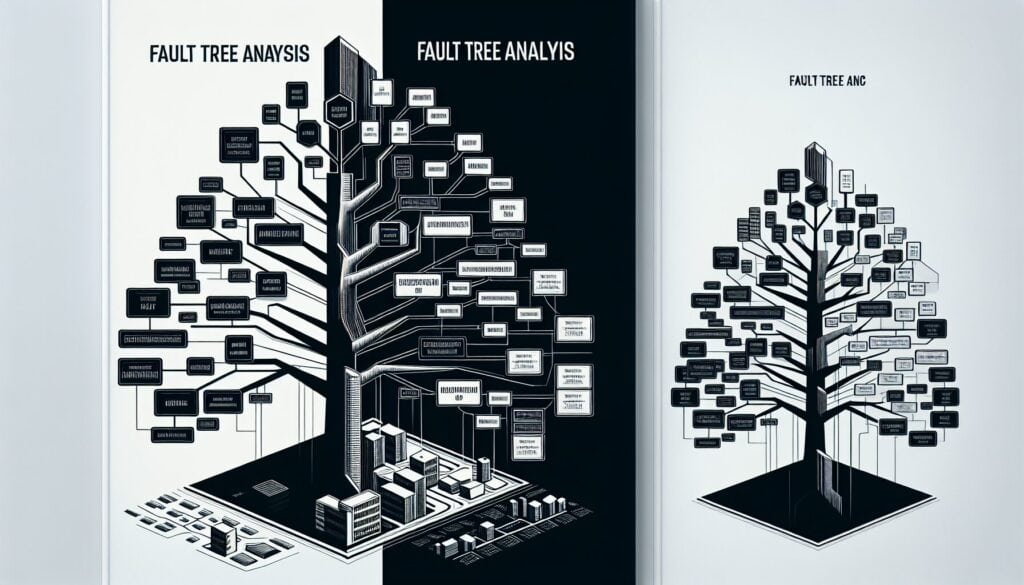这是一种自上而下的演绎式故障分析技术,使用布尔逻辑分析系统的不期望状态("顶层事件 "或故障),并将一系列较低层次的故障结合起来。 事件 或可能导致故障的故障。
- 方法: 工程, 质量
故障树分析(FTA)

故障树分析(FTA)
- 故障分析, 故障树分析(FTA), 流程改进, 质量保证, 质量管理, 风险分析, 风险管理, 安全
目标
如何使用
- 从特定的系统故障(首要事件)开始。然后,找出可能导致最高事件的所有直接原因(基本事件或中间事件),并使用逻辑门(AND、OR 等)将其连接起来,形成树状结构。可以为基本事件分配概率,从而计算出最高事件的概率。
优点
- 提供了一种直观、系统的方法来识别系统故障的所有潜在原因;如果已知故障概率,则可用于定量风险评估;有助于确定改进领域的优先次序,以提高系统可靠性和安全性。
缺点
- 对于大型系统而言,可能比较复杂和耗时;需要详细了解系统和潜在的故障模式;假定事件是独立的,除非另有明确的模型;定量结果的准确性取决于输入故障概率的准确性。
类别
- 工程, 制造业, 产品设计, 质量, 风险管理
最适合:
- 通过识别可能导致特定意外结果(故障)的所有可能事件序列,分析系统的安全性和可靠性。
故障树分析法(FTA)在航空航天、汽车、核电和医疗保健等对系统可靠性和安全性要求极高的行业尤其具有优势。这种方法在项目的设计阶段非常有效,工程师和设计师可以在潜在的故障模式在实际应用中显现之前,先发制人地识别它们。例如,在航空航天领域,FTA 可用于分析飞行控制系统的可靠性,找出可能导致飞行安全事故的所有故障路径。在汽车行业,制造商在开发新车型时可能会使用 FTA,以确保所有安全机制都能应对潜在的故障情况。FTA 的参与者通常包括系统工程师、安全工程师和可靠性分析师,他们共同评估系统的硬件和软件组件。它通常由寻求提高运行安全性和降低系统故障相关风险的利益相关者发起。通过量化基本事件发生的概率,FTA 还能使组织有效地分配资源,将重点放在最重要的风险因素上,如果这些风险因素得到解决,将大大提高安全性和可靠性指标。故障树的可视化表现形式进一步促进了多学科团队之间的沟通,并通过提供清晰的路径来描述各种故障如何汇聚成最高事件,从而为决策过程提供支持。这种结构化方法非常符合严格安全标准行业的监管要求,最终可提高安全协议的合规性。
该方法的关键步骤
- 定义代表系统故障的顶级事件。
- 找出可能导致顶级事件的直接原因。
- 发展有助于直接原因的中间事件。
- 使用逻辑门(AND、OR)连接事件以说明关系。
- 尽可能为基本事件分配概率。
- 利用基本事件的概率计算最高事件的概率。
- 审查并完善故障树,确保其完整性和准确性。
专业提示
- 将故障模式影响分析(FMEA)与 FTA 结合起来,全面了解故障模式及其对系统性能的影响。
- 对基本事件的概率进行敏感性分析,以确定哪些事件对首要事件的概率影响最大。
- 随着系统设计的发展或运行数据的获得,定期更新故障树,以确保风险评估的相关性和准确性。
历史背景
1960
1960
1960
1962
1970
1972
1980
1960
1960
1960
1960
1963
1970
1980
1980
(如果日期不详或不相关,例如 "流体力学",则对其显著出现的时间作了四舍五入的估计)。















相关文章
制造运营管理(MOM)
制造执行系统(MES)
生产控制计划
人工测试
手动搬运评估表 (MAC)
手动任务风险评估工具(ManTRA)